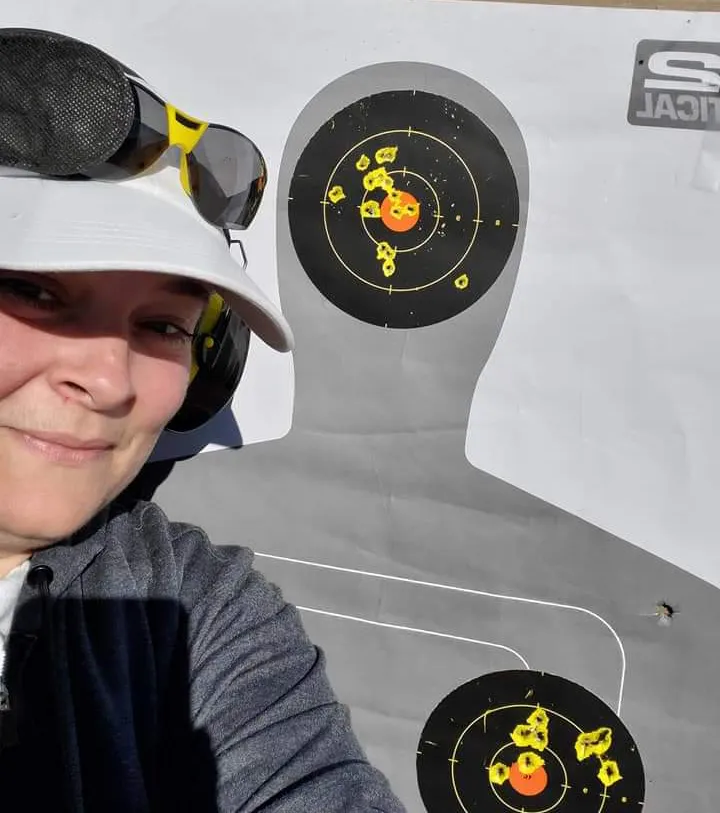
FIREARMS TRAINING
WITH YOUR PEACE IN MIND
FIREARMS SAFETY & INSTRUCTION COURSES

ETA Firearms is your go-to choice for gun safety classes in Arizona. We also educate for concealed weapon permits, tactical training and more.
Firearms safety courses teach important safety practices and procedures to help prevent accidents and injuries when handling firearms. Being knowledgeable and trained in safe handling techniques can help reduce the risk of accidental discharges and injuries to yourself and others.
NRA CERTIFIED INSTRUCTORS
USCCA CERTIFIED INSTRUCTORS
WOMEN INSPIRED COURSES
ACTIVE SHOOTER TRAINING
FIRST AID COURSES
CONCEALED CARRY WEAPONS
REAL ESTATE AGENT SAFETY
LED CLASSES
It's not only about the novelty of shooting or owning a "gun". It's about our obligation to protect and freely exercise our 2nd Amendment right. We offer a variety of courses created by licensed instructors that teach respect, safety, responsibility and the legal requirements necessary to own and possess a personal firearm in Arizona.



OUR TRAINING COURSES & CLASSES
Taking a firearms safety course is an important step in being a responsible firearms owner and protecting your assets, yourself, and others. It can help you develop the knowledge, skills, and mindset necessary to safely and confidently handle firearms in a variety of situations.
NEW GUN OWNER TRAINING PROGRAM
1:1 & GROUP TRAINING AVAILABLE
SPECIALTY CLASSES & COMBO COURSES
WOMEN ONLY COURSES
CUSTOM CREATED COURSES & GROUPS
Schedule a free consultation here:
Stay Informed Through our Blog

The Psychology of Security: Understanding Human Behavior to Enhance Safety Measures

1. Perception of Threat and Risk
Understanding Risk Perception:
- Fear vs. Reality: People often perceive risks based on emotion rather than actual data. For example, high-profile incidents of crime can create exaggerated fears, leading to overly restrictive measures that may not actually address the most pressing risks.
- Vulnerability: Individuals may feel more secure when they believe that safety measures are in place, even if those measures are not always effective. Understanding this perception helps in designing measures that are both reassuring and effective.
Application in Safety Measures:
- Effective Communication: Clearly communicate the actual risks and the steps taken to mitigate them. This can prevent fear-driven responses and foster a sense of genuine security.
- Visual Indicators: Use visible security measures, like security cameras or patrols, which can provide reassurance even if they are not the primary deterrent.
2. Behavioral Responses to Security Measures
Understanding Behavioral Reactions:
- Compliance vs. Resistance: People might comply with security measures if they understand their purpose, but they may resist or circumvent them if they feel they are intrusive or unjustified.
- Routine and Habits: Security measures that disrupt daily routines may be met with resistance. People are more likely to follow measures that integrate smoothly into their habits.
Application in Safety Measures:
- User-Friendly Design: Design security measures that are easy to understand and use. For example, access control systems should be simple and intuitive.
- Behavioral Nudges: Incorporate subtle cues that encourage compliance without being overly intrusive. For instance, signage that gently reminds people of security practices can be effective.
3. Trust and Cooperation
Building Trust:
- Transparency: Clearly explain the reasons for security measures and how they protect individuals. Transparency helps in building trust and gaining cooperation.
- Involvement: Involve stakeholders in the development and implementation of security measures. When people feel they have a say in the process, they are more likely to support it.
Application in Safety Measures:
- Community Engagement: Work with community members to understand their concerns and preferences regarding security. Tailor measures to address these while maintaining safety.
- Feedback Mechanisms: Implement systems for receiving and addressing feedback on security measures. This can help in making necessary adjustments and maintaining trust.
4. Psychological Comfort and Stress Reduction
Impact on Well-being:
- Stress and Anxiety: Excessive or poorly designed security measures can increase stress and anxiety. For instance, constant surveillance may lead to feelings of paranoia or discomfort.
- Comfortable Environment: People are more likely to feel secure in an environment that balances safety with comfort. Overly stringent measures can create a hostile or oppressive atmosphere.
Application in Safety Measures:
- Balanced Approach: Aim for security measures that protect without overwhelming. Ensure that security interventions are as non-intrusive as possible while still effective.
- Environment Design: Create environments that are welcoming and secure. For example, well-lit areas and clear signage can enhance both safety and comfort.
5. Social Dynamics and Influence
Role of Social Norms:
- Influence of Peers: People often follow social norms and are influenced by the behavior of those around them. If security measures are seen as standard practice within a community or organization, individuals are more likely to accept them.
- Peer Pressure: Social influence can also be used to promote positive security behaviors, such as reporting suspicious activities or following safety protocols.
Application in Safety Measures:
- Norm Setting: Establish and promote security norms within a community or organization. Highlighting positive behavior and creating role models can encourage widespread compliance.
- Social Campaigns: Use social campaigns to foster a culture of security awareness and cooperation.
By integrating psychological insights into the design and implementation of security measures, organizations and communities can create environments that are both safe and supportive of human behavior. Understanding how people perceive, react to, and interact with security measures helps in crafting solutions that are not only effective but also respectful of individual needs and psychological well-being.
Monday through Sunday
By appointment only
Copyright © 2024 E.T.A. FIREARMS | All Rights Reserved





